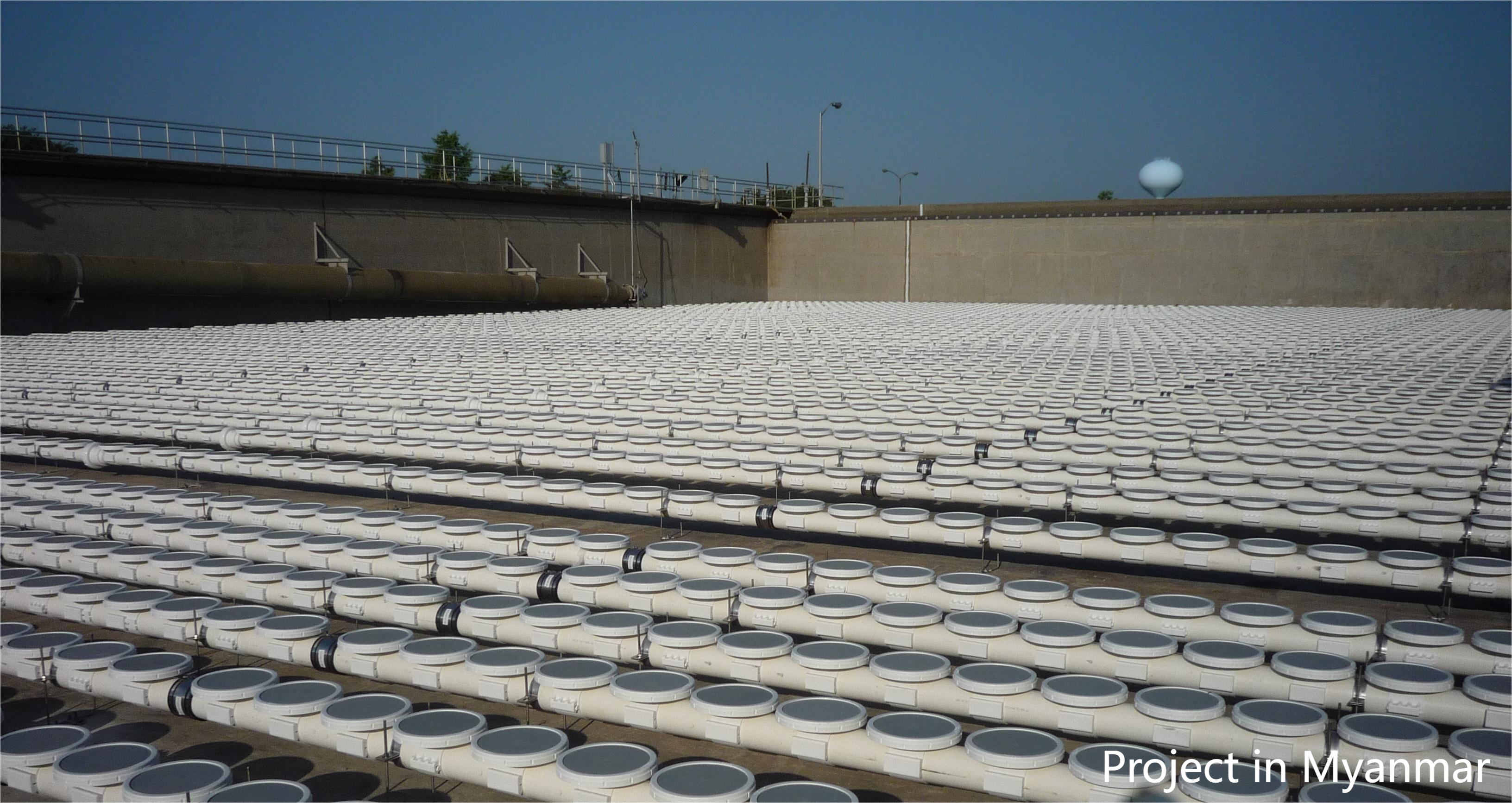1.1 Scope of application
SSI provides aeration plates/tubes for wastewater treatment plant aeration processes. In wastewater treatment plants using biochemical treatment processes, SSI's microporous aerators can significantly improve wastewater treatment efficiency. SSI's synthetic EPDM rubber developed based on customer needs, combined with advanced compression molding technology, has good elasticity, durability and tear resistance, which can support the aerator in long-term or intermittent operation in sequencing batch treatment processes.
1.2 Sewage composition
EPDM membranes manufactured by SSI are primarily intended for use with conventional municipal wastewater as defined in DWA-M115. Wastewater plant personnel must continually monitor and check the consistency of recorded water quality parameters. Certain chemicals may affect aerator performance: in particular, solvents and halogenated components may damage EPDM. Other hydrocarbons such as oil, grease, and fats can also damage EPDM membranes at higher than normal concentrations (25ppm).
Industrial wastewater treatment (usually industrial wastewater is considered industrial wastewater if it accounts for more than 10% of the treated wastewater) may require the use of SSI's patented PTFE (polytetrafluoroethylene) and VITON coated EPDM diaphragms, especially for the treatment of industrial wastewater from the dairy, paper mill, beverage and oil refining industries. Most diaphragms required for industrial wastewater treatment require pre-testing, and the relevant warranty terms also require special confirmation.
1.3 Pretreatment
The proper mechanical screen, grit chamber, and grease trap are crucial to the optimal performance of the aerator in the subsequent biochemical tank. Inadequate pretreatment or no pretreatment will reduce the aeration efficiency. Regularly check whether the aerator in the aeration tank is attached by accumulated filaments, and clean it as needed, especially for the liftable units that need to be repaired. When the aeration unit with filaments attached is lifted to the water surface, the aeration tube diaphragm is very likely to rupture.
1.4 Sunlight and UV radiation
Generally speaking, EPDM diaphragms are not affected by climate and are resistant to UV radiation, but direct sunlight should still be avoided on the aerator, because the sun exposure can easily heat up the black diaphragm to 80~100°, which will accelerate the aging of the diaphragm. When the aeration tank is emptied, the aerator needs to be flushed and the diaphragm should be kept as moist as possible, because once the sludge attached to the aerator is air-dried and hardened, the micropores on the diaphragm will be permanently blocked. Therefore, when the aeration system does not function properly, the aeration tank should be filled with clean water and the liquid level should be kept above the aerator.
1.5 Temperature
The water temperature should be maintained within +5°~+30C. Avoid freezing of the aerator at low temperatures, which may cause permanent damage to the aerator. The operating temperature of the aerator must not exceed +60°C. Stainless steel air risers usually significantly reduce the air temperature. If in doubt, please confirm with SSI.
1.6 Air
In any case, it must be ensured that the blowers provide oil-free air. A failed blower may discharge oil into the air main, while the remaining blowers will push the oil all the way to the aerator. Dust filters in accordance with DIN EN779 should be used: dust removal rate 90%, class G4. The air entering the blower should also comply with local regulations.
1.7 Air risers, main and branch pipes
The size and layout of the piping system must meet the calculation and design requirements, and the piping materials must meet the requirements of the use environment. Regarding the chemical resistance of the pipes, all possible aspects from sewage to air should be considered, including but not limited to acids or other chemicals injected into the air flow, and water impact from external sources. Regarding the expansion or upgrading of existing pipes, all existing pipes, valves, fittings, etc. should be checked for their suitability for the new requirements. Any corrosion will eventually lead to the failure of the aerator and even the paralysis of the entire aeration system. All air distribution branches connected to the aerator must be adjusted horizontally with a tolerance range of 10mm to ensure uniform aeration. By controlling the total air volume, the air flow is automatically distributed to each tank. If this is not possible, at least all air distribution branches in the aeration tank should be leveled to the same immersion depth.
1.8 Aerator size, material, weight, buoyancy and resistance
For detailed parameters of the aerator, please refer to the data sheet in our product catalog. The buoyancy of the aerator is related to the ventilation volume
1.9 Air pipes used for aerator installation
Aerators are generally installed on round or square pipes, and UPVC/ABS/SS304 pipes can be used.

Contact: Miss.Amber
Phone: 0086-18019736003
E-mail: amber@shdubhe.com
Whatsapp:0086-18019736003
Add: Room 428, No.255 Xinjinqiao Road, Pudong District, Shanghai, China
We chat
